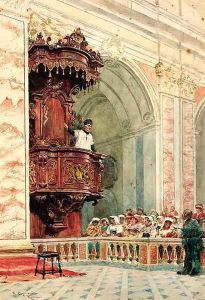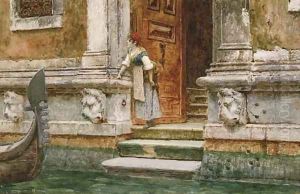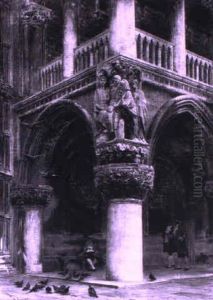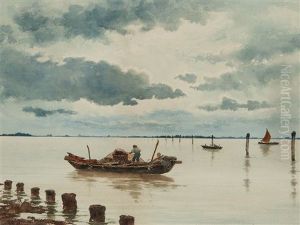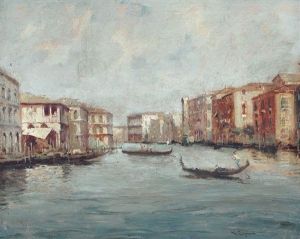Nazzareno Cipriani Paintings
Nazzareno Cipriani was an Italian painter known for his historical scenes, portraits, and Orientalist works. He was born on August 9, 1843, in Asciano, a town in the province of Siena, Tuscany. Cipriani displayed an early interest in the arts and was initially trained in Siena before moving to Rome, which was a central hub for artists seeking to study classical art and the Italian masters.
In Rome, Cipriani furthered his education and honed his artistic skills. He was influenced by the works of Italian Renaissance artists and the Neoclassical style, which was prevalent during his time. Cipriani's paintings often reflected his fascination with history and exotic cultures, as seen in his Orientalist paintings, which were popular among European artists in the 19th century. These works depicted scenes from North Africa and the Middle East, characterized by their detailed portrayal of costumes, architecture, and customs.
Apart from his Orientalist subjects, Cipriani also gained recognition for his historical paintings and portraits. His historical works were typically based on significant events from Italian and European history, imbued with a sense of drama and narrative. As a portraitist, he captured the likenesses of notable figures of his time, showcasing his ability to render human features and expressions with accuracy and sensitivity.
Throughout his career, Nazzareno Cipriani exhibited his works in various art venues, including the prestigious Venice Biennale and exhibitions in Rome and Florence. His paintings were well-received, earning him a respectable reputation among his contemporaries and art patrons.
Cipriani's contributions to Italian art were part of the larger 19th-century movement that looked back to the country's storied past while also engaging with contemporary cultural and artistic trends. He remained active as an artist until his later years, continuing to produce works that reflected his enduring passion for history and art.
Nazzareno Cipriani passed away on December 21, 1925, in Rome. His legacy is preserved through his paintings, which continue to be appreciated for their historical value and artistic merit. Cipriani's works can be found in various art collections, museums, and galleries, offering a glimpse into the rich tapestry of 19th-century Italian art.

